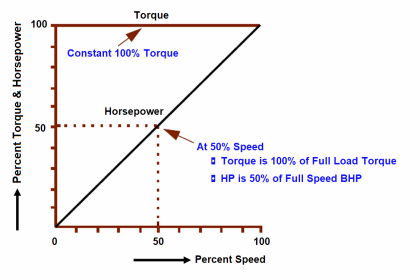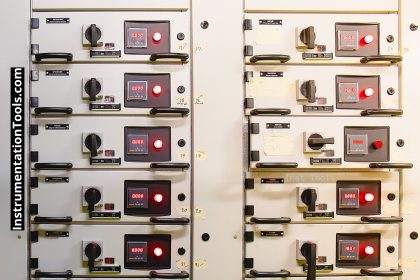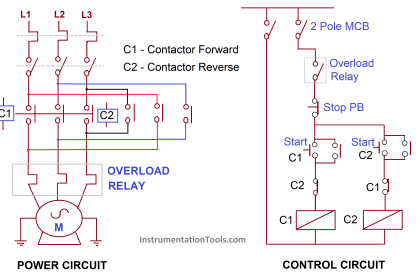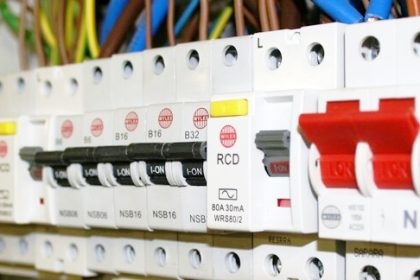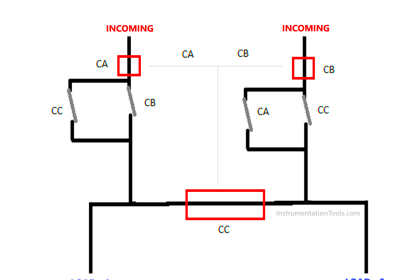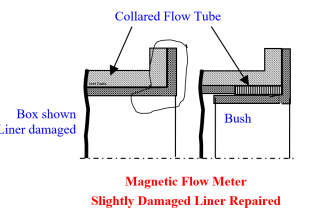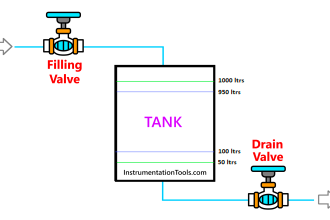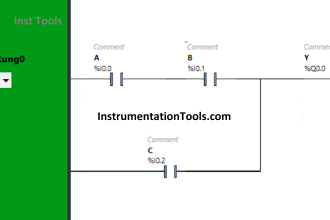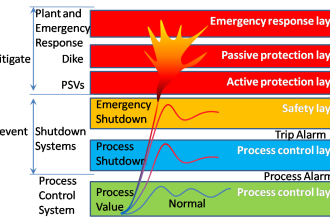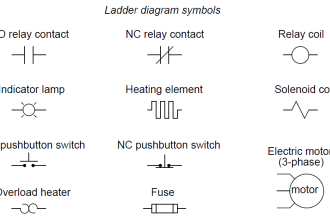The classification of circuit breakers are categorized into four types based on arc extinction.
The arc provides a low resistance path to the current and the flow of current in the circuit remains uninterrupted.
The arc resistance depends upon the degree of ionization, arc length, and cross-sectional area of the arc.
Classification of Circuit Breakers
The below animation shows the detailed types of circuit breakers.
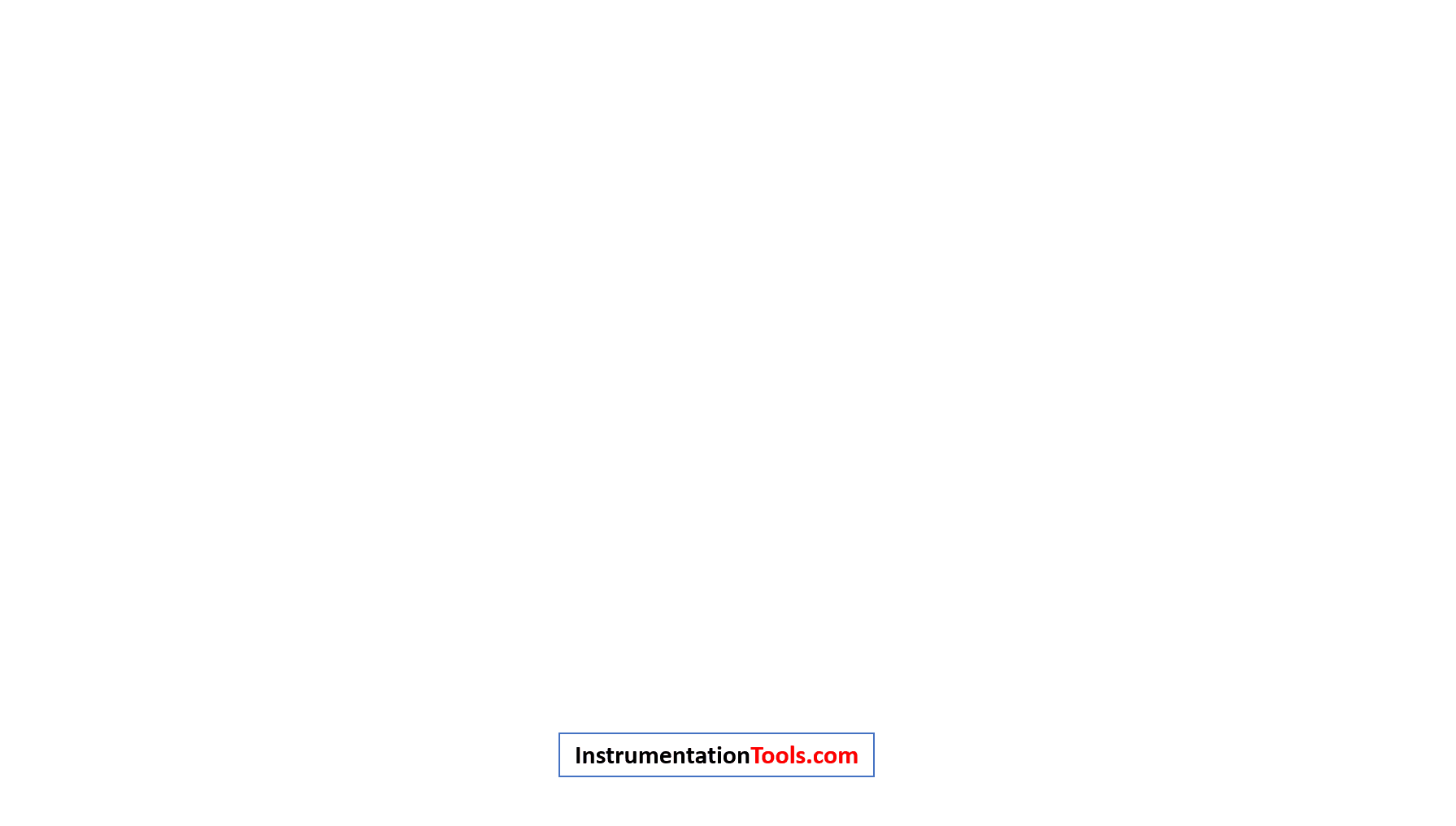
In this article, we focused on popular circuit breakers.
The circuit breakers based on the arc extinction are classified as below.
- Air Circuit breaker
- Oil circuit breaker
- Vacuum Circuit breaker
- Sulphur Hexa Flouride Circuit breaker
Air Circuit Breaker
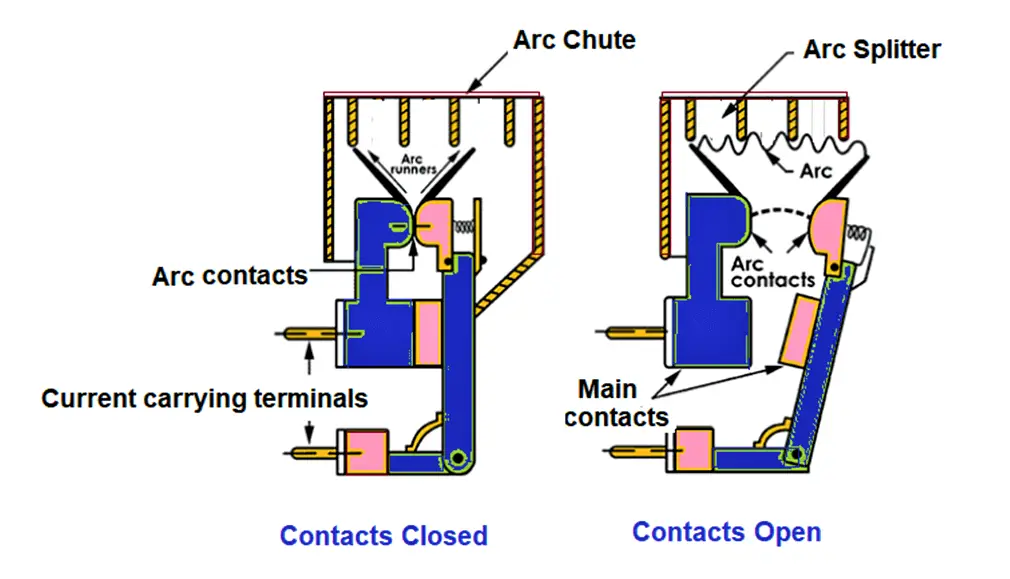
Air Circuit breaker (ACB) operates in free air. In an air circuit breaker, the arc is initiated and extinction of arc takes place in the static air in which the arc moves.
ACB is used for the low voltage up to 15KV, and the rupturing capacity of the breaker is 500 MVA.
The classification of the air break circuit breaker depends on the types of air breaking technics. The types of the air break circuit breaker are plain circuit breaker, air blast circuit breaker.
Plain air Circuit breaker
In the plain air break circuit breaker, the contacts are made in the shapes of the two horns.
The magnetic field as an arc interruption medium and in the arc-chute circuit breaker low and medium voltage circuit are used for arc interruption.
Air blast Circuit Breaker
The air blast circuit breaker uses a blast of air to blow the arc. In an air blast circuit breaker, air under pressure is stored in the tank, a high-velocity jet through the nozzle is employed to extinguish the arc.
This type of circuit breaker is used for indoor services which have a medium-high voltage field.
The air blast circuit breaker is utilized for the low voltage up to 15 kV and rupturing capacities of 2500 MVA. Such types of circuit breakers are aslo used in outdoor switchyards for 220 kV lines.
In the case of an axial blast circuit breaker, the airflow moves longitudinally in the direction of the arc while in the cross blast circuit breaker the airflow takes at the right angle of the arc.
Advantages
- An economical choice for voltages up to 1000 V.
- Simple construction.
- No fire or health hazard.
- High short-circuit withstand and arc interrupting capability.
Disadvantages
- Uneconomical for voltages exceeding 3.3 kV (too big).
- Requires regular maintenance in medium voltage applications.
Oil Circuit Breaker
In the oil circuit breaker, oil is a dielectric or insulating medium for arc extinction.

In an oil circuit breaker, the contacts of the breaker are made to separate in the insulating oil.
When faults take place, the contacts of the circuit breaker are open under the insulating oil and an arc is developed between them, and heat of the arc is evaporated in the surrounding oil.
Oil circuit breakers are two types
- Bulk Oil Circuit breaker
- Minimum Oil Circuit breaker
Bulk Oil Circuit breaker
Bulk Oil circuit breaker serves two purposes. One is as an arc quenching media, other is as an insulator.
Minimum Oil Circuit breaker
This type of breaker also acts as an arc quenching medium like bulk oil circuit breakers. But the minimum oil has itself insulation oil in the arc interrupting chamber.
Advantages
- The high dielectric strength of oil provides good insulation.
- The oil used is a good insulator.
- Oil in the circuit breaker absorbs the energy of an arc when decomposing.
- The dielectric strength of oil is high.
- It uses less amount of oil.
Disadvantages
- Due to the dissolution of the oil in the arc, the oil becomes polluted by carbon particles, which reduces the dielectric strength. Hence Periodical maintenance is required.
- The dielectric strength will declines the oil quantity quickly because of the high quantity of carbonization.
- There is a possible risk of formation of the explosive mixture with air.
- Oil may be flammable and cause fire hazards if a defective oil circuit breaker should fail under pressure and generate an explosion.
Vacuum Circuit Breaker
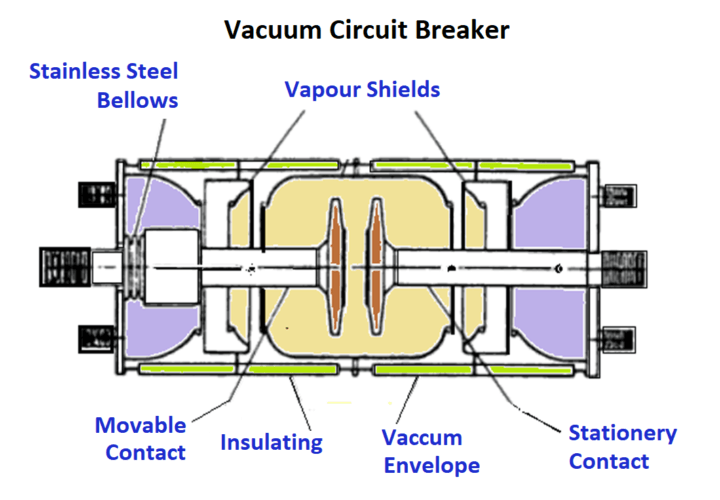
In this type of circuit breaker, the contacts of the circuit are placed in the permanently sealed vacuum interrupter.
The arc is quenched when the movable contact is separated from the fixed contact is separated in the high vacuum.
Vacuum Circuit Breaker is less bulky, cheaper in cost, negligible maintenance, and has a long life.
Advantages
- Due to virtually no depositories being formed during the breaking operation, vacuum switchgear supports a large number of operations.
- More compact than the other types.
- Vacuum bottles are relatively affordable and easy to replace.
- Very little maintenance needed.
Disadvantages
- The tendency to cause voltage ‘spikes’ when interrupting large currents.
- No practical method available at this stage to observe the vacuum inside the bottle.
- Vacuum circuit breakers are generally limited to voltages of up to 36 kV.
Sulphur Hexafluoride Circuit Breaker
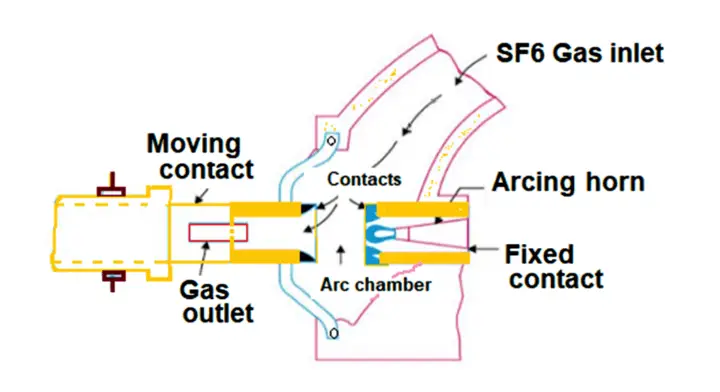
The sulfur hexafluoride circuit breaker uses SF6 gas for extinguishing the arc.
The SF6 gas has great arc extinguishing property, and it is also superior as compared to other arc quenching media such as oil or air.
Advantages
- Switching is very softer than, for example, vacuum breakers.
- Spikes in voltages are caused when interrupting large currents
- SF6 breaker is suitable for voltages up to 66 kV for metal-clad switchgear and 800 kV for Gas Insulated Switchgear(GIS).
- SF6 gas pressure can be easily monitored
- The insulating medium presents no fire/explosion hazard.
Disadvantages
- Depositories formed during switching, limit the number of possible operations before maintenance or restoration is required
- More expensive than other types of switchgear
- Decomposed SF6 products are toxic and should be handled with proper care.
Read Next:

